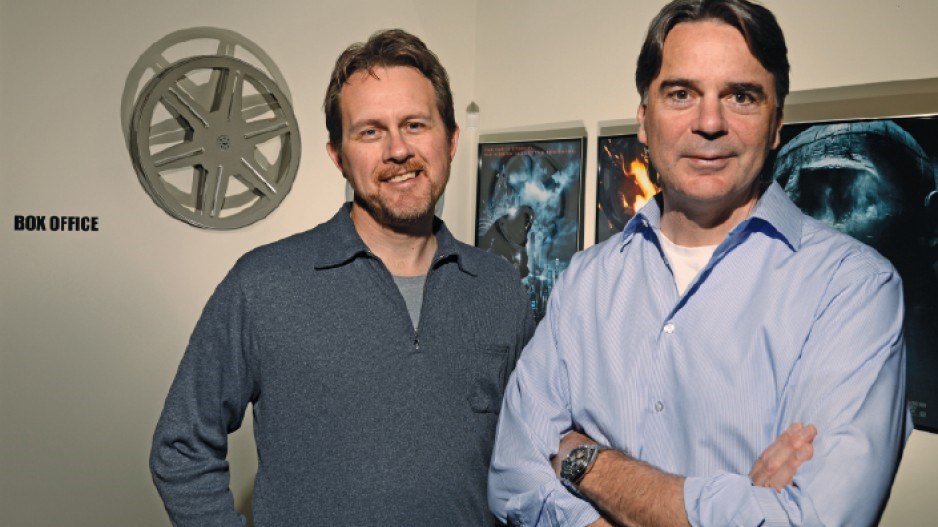Harry Potter and the Deathly Hallows: Part 2 includes a scene involving fire demons and a tower of furniture that was particularly challenging to translate into 3-D.
So when Warner Bros. Pictures needed help with the scene in post-production, it called on Vancouver’s Gener8 Digital Media Corp. to handle the 3-D rendering.
It’s just one of the major feature films the company has worked on, and its rapid growth suggests that, this time around, 3-D film might not be a passing fad, as it was in the 1950s.
“When you look at the top 10 movies in the last six months, seven are 3-D,” said Rory Armes, Gener8’s co-founder and CEO. “The movies that are breaking records, they have to have 3-D on them.”
In just 18 months, since the company started doing 2-D-to-3-D film conversion, Gener8 has grown from a team of five people to 140 and continues to add new hires with each new film project it lands.
The company’s rapid growth recently forced it to move into a new studio in Mount Pleasant.
Oddly, neither Armes nor co-founder and COO Tim Bennison has a background in film. Both come from the console gaming industry.
Armes co-founded Radical Entertainment, a Vancouver console game studio, in 1991, but ended up working for Electronic Arts in Burnaby. Bennison also worked with Radical Entertainment, which underwent a downsizing last year.
Armes left EA in 2010 to start his own company just when 3-D was on a rebound. He brought Bennison aboard to help him develop a suite of tools that could be used in post-production to do high-quality 3-D rendering, regardless of whether the film was shot in 2-D or 3-D.
“Avatar and Alice in Wonderland – a bunch of 3-D revival movies – came out and Hollywood really started to look at 3-D as a viable platform for revenue and change,” Armes said.
Traditionally, 3-D movies have been filmed using cameras with two lenses to get a stereoscopic image. A movie that is issued in 2-D and 3-D typically is sometimes shot with two sets of cameras. But new animation technology now allows films to be shot in 2-D and then converted to 3-D.
Armes and Bennison raised more than $6 million in angel funding, and were able to create a new 3-D platform called G83-D just when the demand for 3-D animation technology was growing.
“We were kind of in the right place at the right time,” Bennison said. “We very quickly got a couple of big films. The way we do 2-D to 3-D conversion is very different than anybody else in our space.”
Gener8 has already landed contracts with most of the major studios, including Disney (NYSE:DIS), Time Warner Inc. (NYSE:TWX), Sony Corp. (NYSE:SNE) and Fox Entertainment Group.
Although the founders’ backgrounds are in console gaming, 90% of the company’s employees come from the film industry. It has attracted a number of employees from Hollywood and has found a rich talent pool in Vancouver’s film and animation schools.
“We’ve had some great success with hiring young people out of schools in Vancouver, who end up getting their first film credit [on] Harry Potter and the Deathly Hallows: Part 2,” Bennison said.
To date, most of the work the studio has done has been partial conversions: fixing trouble spots for movies that were shot with native 3-D cameras. But the company is now working on two feature films shot in 2-D and being entirely converted to 3-D using G83-D.
“I can see Gener8 consistently running a 200-person shop here in Vancouver,” Armes said. “We would love to be at a point where we’re doing multiple movies at the same time.” •




